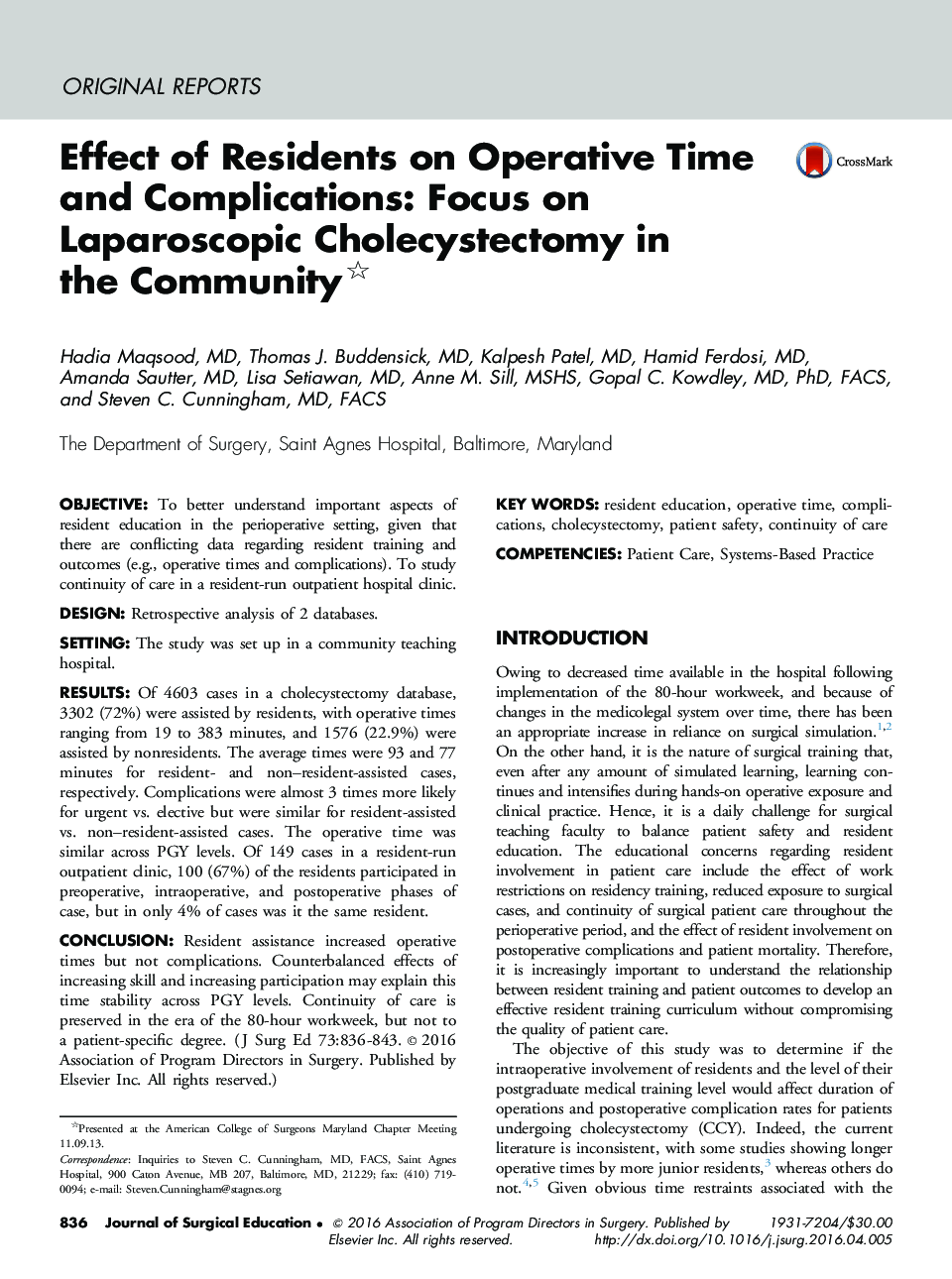| Article ID | Journal | Published Year | Pages | File Type |
|---|---|---|---|---|
| 4297403 | Journal of Surgical Education | 2016 | 8 Pages |
ObjectiveTo better understand important aspects of resident education in the perioperative setting, given that there are conflicting data regarding resident training and outcomes (e.g., operative times and complications). To study continuity of care in a resident-run outpatient hospital clinic.DesignRetrospective analysis of 2 databases.SettingThe study was set up in a community teaching hospital.ResultsOf 4603 cases in a cholecystectomy database, 3302 (72%) were assisted by residents, with operative times ranging from 19 to 383 minutes, and 1576 (22.9%) were assisted by nonresidents. The average times were 93 and 77 minutes for resident- and non–resident-assisted cases, respectively. Complications were almost 3 times more likely for urgent vs. elective but were similar for resident-assisted vs. non–resident-assisted cases. The operative time was similar across PGY levels. Of 149 cases in a resident-run outpatient clinic, 100 (67%) of the residents participated in preoperative, intraoperative, and postoperative phases of case, but in only 4% of cases was it the same resident.ConclusionResident assistance increased operative times but not complications. Counterbalanced effects of increasing skill and increasing participation may explain this time stability across PGY levels. Continuity of care is preserved in the era of the 80-hour workweek, but not to a patient-specific degree.
